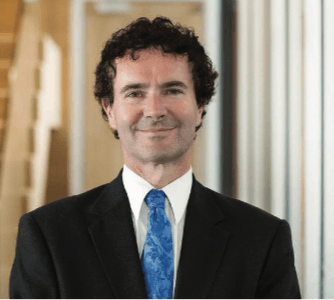
Reading Time: 5 Minutes
Over the past four years the New Zealand economy has grown on average by 3.5% each year. That is appreciably above the long-term average pace of growth just above 2.5% and at first glance a tad surprising. That is because if we go back four years our largest export earner, the dairy sector, was being hit by a 60% fall in international prices and collapse in local incomes.
First, tourist numbers have soared by about 45% over the past five years. That followed a five year period of virtually no growth. Lots of extra people have been travelling around the country staying in motels, hotels, backpacker lodges and camping grounds. Restaurants and cafés have been busy along with tourist attraction operators.
Second, house construction has recovered strongly from 2011, which saw the lowest number of consents issued for new dwellings to be built since the 1960s. Since that low-point of 13,500 dwelling consents issued nationwide (3,400 in Auckland), issuance has risen to 31,500 (11,200 in Auckland).
The interesting thing to note about the tourism and construction sectors is that they are both very labour intensive. Their booms help explain why over the past four years an extra 350,000 people have found employment and the unemployment rate has fallen from 5.6% down to 4.4%.
Third, we have experienced a net migration boom. Late in 2012 the country lost 4,000 more people than it gained. Since then we have received a net inflow near 310,000 with a gain of 67,000 over the past year. Auckland attracts near 60% of the net flow, so it has received a population boost since late-2012 of around 186,000 people (give or take ten or so thousand).
There have also been some other factors contributing to strong New Zealand growth, including a 1.75% cut in interest rates set by the Reserve Bank after it raised rates 1% and inflation turned out to be 2% lower than they were expecting. Global oil prices also fell strongly over 2014-15. Plus we have seen underlying strong growth in sectors like health, export, education, and technology. More recently the dairy sector has staged a strong recovery and almost all other parts of the primary sector, bar coal, have also experienced strong conditions.
Unsurprisingly, after such strong growth our economy is now short of resources. Every day we read about shortages of staff across a wide range of professions – nurses, builders, farm workers, engineers, police and so on. One measure we economists follow also tells us that factories are very, very busy.
These indicators tell us that inflation will rise and on that basis we have for many years been forecasting rising interest rates. But we have been wrong – every year since 2009. Inflation has failed to appear.
This is not something specific to New Zealand, globally inflation has remained stubbornly low. Wages have failed to rise at anywhere near the pace we would have expected based on what happened every previous time of tight availability before the Global Financial Crisis of 2008-09. What has changed?
No-one has the definitive answer, but it is possible that wages growth has been suppressed by employee caution in light of the GFC and worries since then regarding the likes of Greece going bankrupt, the Euro collapsing, Brexit, etc. Workforces are less unionised than before. New technologies are coming along.
But employers are probably also pushing back harder against wage demands than in the past. Why? Because raising selling prices has become very dangerous now that consumers can easily search for a cheaper product online. This helps explain why retailers continue to go out of business even though growth in retail spending in New Zealand has been very strong in recent years.
This intensification of competition and price resistance in the retailing sector explains why retailers need to think less about running a store simply to sell something, and more as providing one of a number of venues people can stroll past and hopefully visit as part of enjoying a retailing experience. Retailing is becoming less transactional and more experiential and that is why the current redevelopment and expansion of Newmarket’s retail centre is so important.
By offering consumers a far wider range and number of stores, entertainment, and dining options the incentive to simply shop online from home or pop quickly in and out of a street side store is reduced. Retailing globally is shifting toward a greater focus on enjoyment.
Will the New Zealand economy allow such enjoyment to in fact be pursued over the next few years? Unless something truly drastic happens internationally, it seems reasonable to expect growth above 2.5% for each of the next three – five years on the back of continued growth in tourism, strong construction, high though slowly easing net migration inflows, higher government spending, stronger business investment, and continued good primary sector growth And interest rates?
In the absence of anything suggesting to us that the old relationships between tight capacity availability and inflation are going to reappear, it seems reasonable to expect low costs facing borrowers for potentially a great number of years – but with mild rises of low magnitude likely from sometime latish next year.
Tags: NBA News